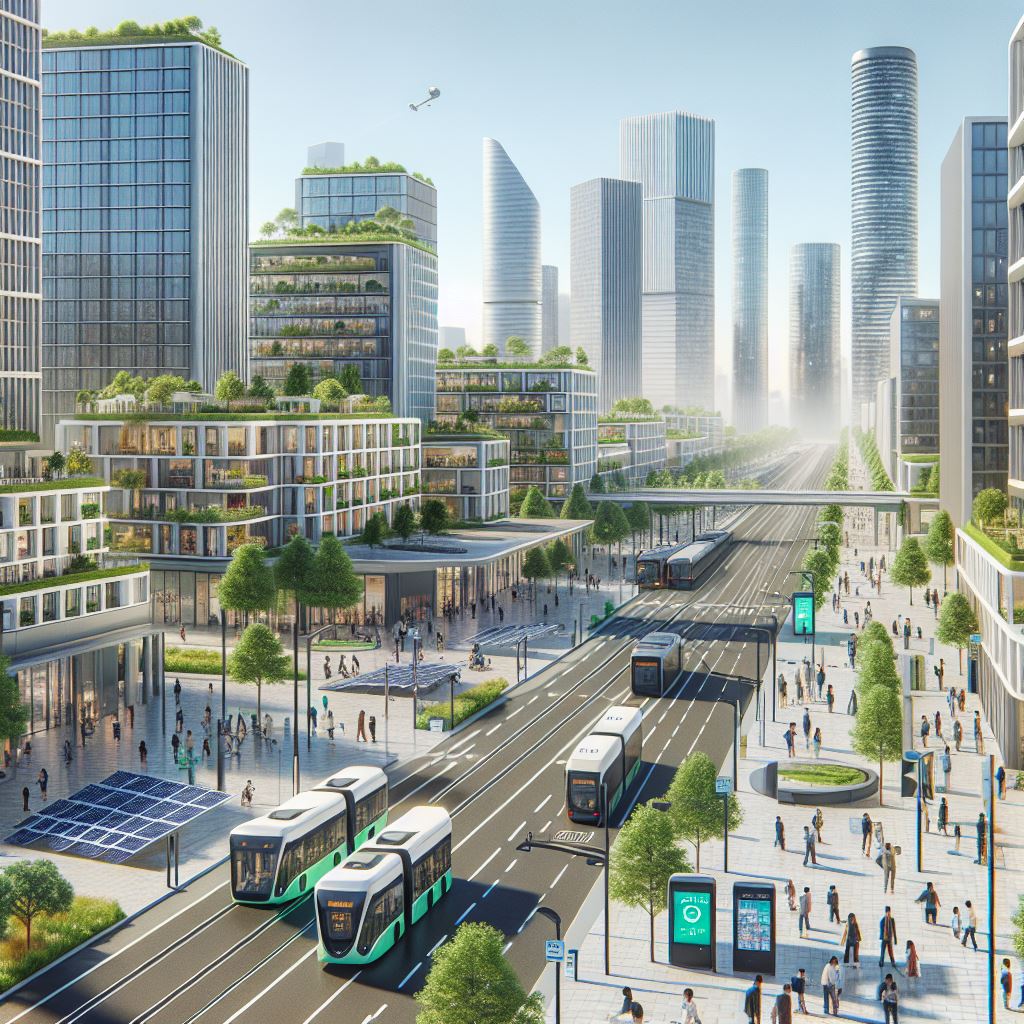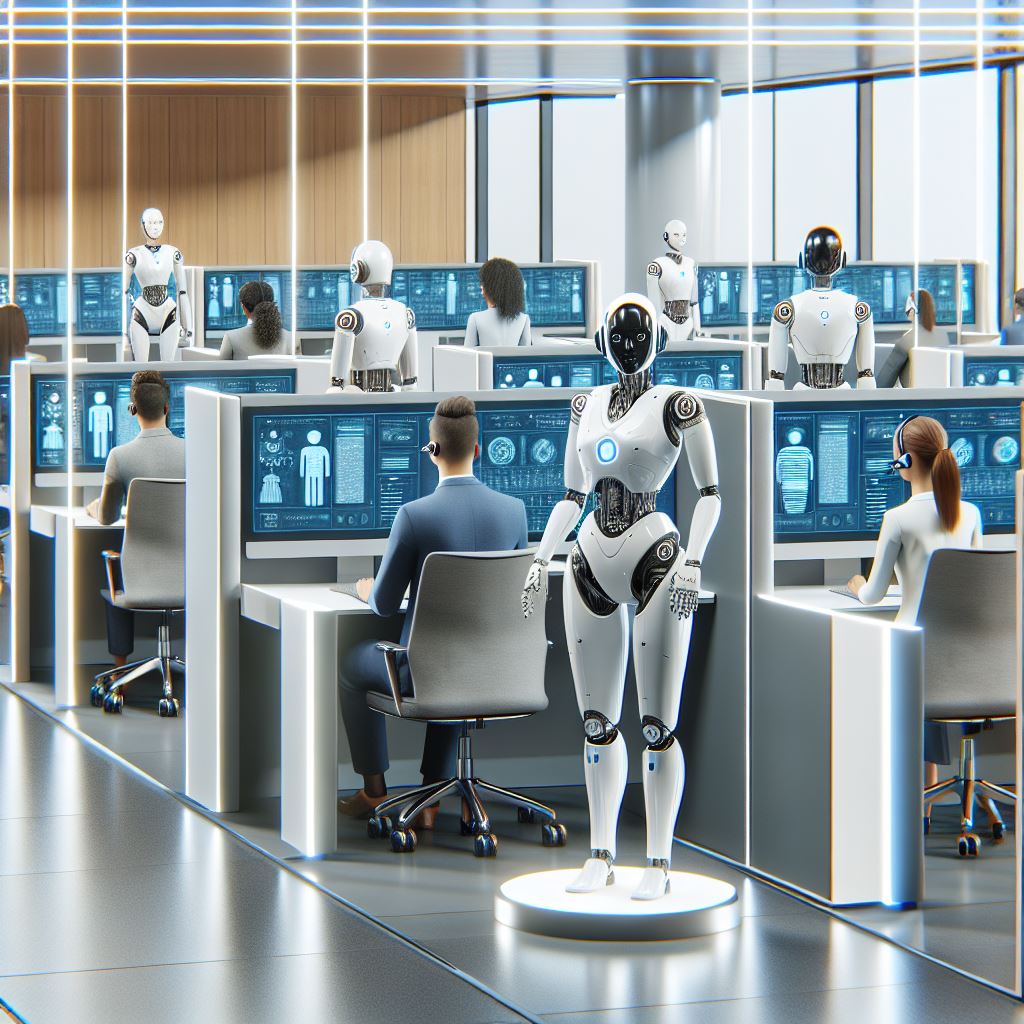Artificial intelligence is emerging as a powerful tool in the fight against climate change and environmental degradation. From optimizing renewable energy systems to monitoring biodiversity, AI is helping us build a more sustainable future.
Environmental Applications
AI is making significant impacts in:
- Climate Modeling
- Energy Optimization
- Wildlife Conservation
- Waste Management
- Resource Conservation
Energy Sector
AI is revolutionizing energy systems through:
- Smart Grid Management
- Renewable Energy Forecasting
- Energy Consumption Optimization
- Demand Prediction
- Infrastructure Maintenance
Conservation Efforts
AI supports conservation through:
- Wildlife Monitoring
- Habitat Protection
- Species Identification
- Poaching Prevention
- Ecosystem Assessment
Waste Reduction
AI improves waste management via:
- Recycling Optimization
- Waste Sorting
- Landfill Management
- Circular Economy Solutions
- Supply Chain Optimization
Climate Action
AI enables climate initiatives through:
- Carbon Footprint Tracking
- Emission Reduction
- Climate Risk Assessment
- Disaster Prediction
- Adaptation Planning
Future Impact
The future of AI in sustainability includes:
- Better climate models
- Enhanced resource efficiency
- Improved conservation tools
- Smart city solutions
- Sustainable agriculture
As we face growing environmental challenges, AI will continue to play a crucial role in developing and implementing sustainable solutions for our planet.
Perhaps most importantly, AI must be viewed as a tool that supports human decision-making rather than a solution in itself. "Technology alone won't solve our environmental challenges," emphasizes Dr. Rodriguez. "AI can inform better decisions, but ultimately humans must act on that information and make the necessary changes in policy, business practices, and individual behavior."
The Path Forward: Collaborative Intelligence
The most promising vision for AI in sustainability isn't one where algorithms replace human judgment, but rather a collaborative approach that combines the strengths of both.
"We're moving toward what I call 'collaborative intelligence,'" explains Dr. Chen. "AI systems excel at processing vast amounts of data, identifying patterns, and optimizing complex systems. Humans excel at contextual understanding, ethical reasoning, and creative problem-solving. When we combine these capabilities, we create something more powerful than either alone."
This collaborative approach is evident in climate resilience planning for coastal cities. In Norfolk, Virginia—a city facing some of America's fastest sea level rise—an AI system analyzes thousands of variables including topography, infrastructure, population density, economic activity, and climate projections. But the final resilience plan emerges through a process that combines these algorithmic insights with community input, political realities, and ethical considerations about equity and justice.
"The AI helps us understand what's possible and optimal from a technical perspective," explains city planner Jennifer Williams. "But decisions about which neighborhoods receive protection first, how resources are allocated, and what trade-offs are acceptable—those require human judgment informed by values and community priorities."
This human-AI partnership extends to corporate sustainability as well. Major companies increasingly use AI to optimize their operations for environmental impact, but the most successful approaches embed these systems within broader sustainability strategies guided by human leadership.
At a global consumer goods company, an AI system continuously analyzes the environmental footprint of thousands of products across hundreds of facilities worldwide. The system identifies optimization opportunities that human analysts might miss—like a particular packaging material that could be replaced with a more sustainable alternative across multiple product lines, or a manufacturing process that could be adjusted to reduce water consumption.
"The AI is incredibly powerful at finding these opportunities," notes the company's sustainability director. "But humans still make the final decisions about which initiatives to prioritize based on our corporate values, stakeholder expectations, and strategic goals. The technology informs our choices but doesn't make them for us."
Democratizing Environmental Intelligence
Perhaps the most transformative aspect of AI for sustainability is its potential to democratize environmental intelligence—making sophisticated analysis and insights accessible to communities and organizations regardless of their resources or technical expertise.
In Indonesia, coastal communities use smartphone apps with embedded AI to monitor coral reef health. Fishermen take underwater photos during their regular activities, which the app automatically analyzes to assess reef conditions, identify concerning changes, and provide management recommendations. This system gives communities previously unavailable insights to manage their marine resources more sustainably.
"Before, only government agencies or well-funded research institutions could monitor environmental conditions with this level of sophistication," explains marine biologist Dr. Aisha Rahman. "Now local communities can generate their own environmental intelligence and use it to inform their decisions."
Similar democratization is occurring in agriculture, where smallholder farmers use AI-powered apps to access personalized climate information, crop recommendations, and market insights previously available only to large agribusinesses with dedicated research teams.
This democratization extends to policy advocacy as well. Environmental justice organizations now use AI tools to analyze pollution patterns, identify regulatory violations, and generate evidence for community advocacy. In Louisiana's "Cancer Alley," community groups used machine learning analysis of air quality data to demonstrate that certain neighborhoods experienced pollution levels far above what official monitoring stations reported—evidence that helped secure stricter emissions controls.
"AI is becoming a powerful equalizer," notes environmental justice advocate Marcus Johnson. "Communities that have historically been marginalized in environmental decision-making now have tools to generate their own data, conduct their own analysis, and advocate more effectively for their right to a healthy environment."
A Planetary Nervous System
As we look to the future, perhaps the most ambitious vision is the development of what some researchers call a "planetary nervous system"—an interconnected network of sensors, satellites, and AI systems that continuously monitors Earth's vital signs and helps humanity become better planetary stewards.
Elements of this system already exist. Satellites monitor deforestation, ice melt, and ocean temperatures. Sensor networks track air quality in cities worldwide. Acoustic monitoring systems listen for illegal logging in protected forests. But these systems largely operate in isolation, without the integration that would make them more than the sum of their parts.
"We're working toward a future where these systems are interconnected and intelligent," explains Dr. Kim. "Imagine a global network that can detect environmental changes as they emerge, predict their consequences, and identify the most effective interventions—all in near real-time."
This vision isn't without challenges. Questions about data ownership, privacy, security, and governance are complex and unresolved. There are legitimate concerns about surveillance and control. But proponents argue that with appropriate safeguards and inclusive governance, such a system could help humanity navigate the environmental challenges of the 21st century.
"The planet already has natural feedback systems that maintain balance," notes Dr. Rodriguez. "But human activity has disrupted many of these systems, and the natural feedback loops often operate too slowly to prevent irreversible damage. AI can help us create feedback loops that operate at the speed and scale of human impact—giving us the information we need to adjust our behavior before we cross critical thresholds."
Key Takeaways for Organizations and Individuals
1. Start with Clear Sustainability Goals
AI is a powerful tool, but it must serve well-defined sustainability objectives. Before implementing AI solutions, clearly articulate your environmental goals and how technology can help achieve them. The most successful implementations align technology with specific sustainability challenges rather than deploying AI for its own sake.
2. Combine Data Sources for Greater Impact
The most valuable insights often come from combining diverse data streams. Look beyond traditional environmental monitoring to incorporate data from supply chains, consumer behavior, social media, and other sources that provide context for sustainability challenges. AI excels at finding patterns across seemingly unrelated datasets.
3. Prioritize Transparency and Explainability
For AI sustainability solutions to gain trust and adoption, they must be transparent and explainable. Ensure your systems can clearly communicate how they reach conclusions and make recommendations. This transparency is particularly important when AI insights inform decisions affecting communities and ecosystems.
4. Address the Technology's Own Footprint
AI systems themselves have environmental impacts through energy consumption and hardware requirements. Implement best practices to minimize this footprint, such as using efficient algorithms, leveraging renewable energy for computing infrastructure, and optimizing hardware utilization through cloud services.
5. Embrace Collaborative Intelligence
The most effective approach combines AI capabilities with human judgment, values, and contextual understanding. Design systems and processes where algorithms and humans each contribute their unique strengths. Ensure that AI augments rather than replaces the human capacity for ethical reasoning and creative problem-solving in addressing sustainability challenges.
As we face unprecedented environmental challenges, artificial intelligence offers powerful new capabilities to understand our planet, optimize our systems, and implement solutions at scale. But technology alone cannot create a sustainable future. The true promise lies in how we integrate these tools into our decision-making, governance, and daily practices—using artificial intelligence to enhance our natural intelligence as planetary stewards.
In the Amazon, as Maria guides her drone back to base, she reflects on how technology has transformed her conservation work. "The AI helps us see things we couldn't see before and act more effectively," she says. "But the reason we're here hasn't changed. We're still fighting to protect this forest because we understand its value—to local communities, to biodiversity, to the climate, to future generations. The technology just helps us fight smarter."
And therein lies the essence of AI for sustainability: not a silver bullet, but a powerful ally in humanity's most important mission—preserving and restoring the natural systems upon which all life depends.




